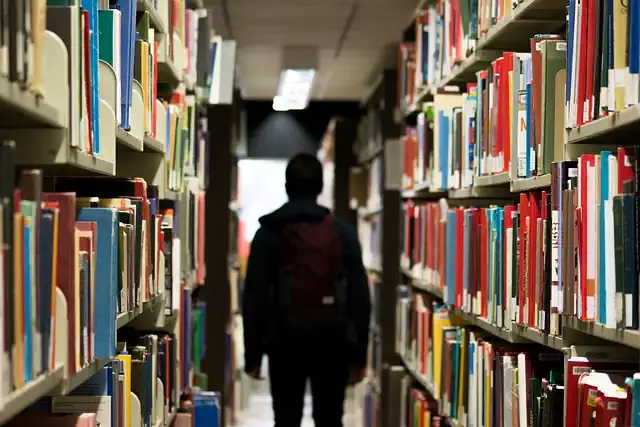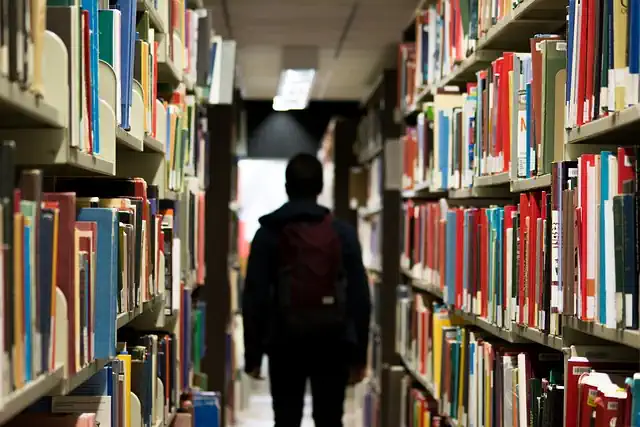How Can I Save Money On Gas And Electric
Introduction
 I
I
ntroduction: Saving money on gas and electric bills is a common concern for many households. With rising energy costs, it can be challenging to keep utility bills under control. However, there are several ways to reduce energy consumption and save money on gas and electric bills. In this article, we will explore some practical tips and strategies to help you lower your energy bills and save money.
10 Tips for Reducing Your Gas and Electric Bills
As the cost of living continues to rise, many people are looking for ways to save money on their monthly bills. One of the biggest expenses for most households is gas and electric. Fortunately, there are several ways to reduce your gas and electric bills without sacrificing comfort or convenience. Here are ten tips for saving money on your gas and electric bills.
1. Use energy-efficient appliances
One of the easiest ways to save money on your gas and electric bills is to use energy-efficient appliances. Look for appliances with the Energy Star label, which indicates that they meet strict energy efficiency guidelines set by the U.S. Environmental Protection Agency. Energy-efficient appliances use less energy than their less efficient counterparts, which can translate into significant savings on your monthly bills.
2. Install a programmable thermostat
A programmable thermostat allows you to set the temperature in your home based on your schedule. For example, you can set the temperature to be cooler during the day when you’re at work and warmer in the evening when you’re home. This can help you save money on your gas and electric bills by reducing the amount of energy you use to heat and cool your home.
3. Seal air leaks
Air leaks in your home can cause your heating and cooling system to work harder than necessary, which can drive up your gas and electric bills. To reduce air leaks, seal gaps around windows and doors with weatherstripping or caulking. You can also use foam insulation to seal gaps around pipes, vents, and electrical outlets.
4. Use ceiling fans
Ceiling fans can help you save money on your gas and electric bills by reducing the amount of energy you use to cool your home. When you use a ceiling fan, you can set your thermostat a few degrees higher without sacrificing comfort. This can translate into significant savings on your monthly bills.
5. Use natural light
Using natural light instead of artificial light can help you save money on your electric bill. Open curtains and blinds during the day to let in natural light, and turn off lights when you leave a room. You can also replace incandescent light bulbs with energy-efficient LED bulbs, which use less energy and last longer.
6. Use power strips
Many electronic devices continue to use energy even when they’re turned off. To reduce this “phantom” energy use, use power strips to turn off electronics when they’re not in use. This can help you save money on your electric bill by reducing the amount of energy you use to power your electronics.
7. Wash clothes in cold water
Washing clothes in cold water instead of hot water can help you save money on your gas and electric bills. Heating water accounts for a significant portion of the energy used by your washing machine, so washing clothes in cold water can significantly reduce your energy use.
8. Use a clothesline
Using a clothesline instead of a dryer can help you save money on your electric bill. Hang clothes outside to dry on a sunny day, or use an indoor drying rack during the winter months. This can help you reduce your energy use and save money on your monthly bills.
9. Use a low-flow showerhead
Using a low-flow showerhead can help you save money on your water and gas bills. Low-flow showerheads use less water than traditional showerheads, which can reduce the amount of energy you use to heat water. This can translate into significant savings on your monthly bills.
10. Turn off the water when brushing your teeth
Turning off the water when brushing your teeth can help you save money on your water bill. Running the water while brushing your teeth can waste a significant amount of water, which can drive up your monthly bill. By turning off the water, you can reduce your water use and save money on your monthly bills.
In conclusion, there are several ways to save money on your gas and electric bills. By using energy-efficient appliances, installing a programmable thermostat, sealing air leaks, using ceiling fans, using natural light, using power strips, washing clothes in cold water, using a clothesline, using a low-flow showerhead, and turning off the water when brushing your teeth, you can significantly reduce your monthly bills without sacrificing comfort or convenience.
The Benefits of Switching to Energy-Efficient Appliances
As the cost of living continues to rise, many people are looking for ways to save money on their monthly bills. One area where significant savings can be made is on gas and electric bills. By switching to energy-efficient appliances, homeowners can reduce their energy consumption and save money on their monthly bills.
The benefits of energy-efficient appliances are numerous. Firstly, they use less energy than traditional appliances, which means that they are cheaper to run. This is because they are designed to use less energy to perform the same tasks as traditional appliances. For example, an energy-efficient refrigerator will use less energy to keep food cold than a traditional refrigerator. This means that homeowners can save money on their monthly bills without sacrificing the quality of their appliances.
Secondly, energy-efficient appliances are better for the environment. By using less energy, they reduce the amount of greenhouse gases that are released into the atmosphere. This is important because greenhouse gases contribute to climate change, which is a major global issue. By using energy-efficient appliances, homeowners can do their part to reduce their carbon footprint and help protect the environment.
Thirdly, energy-efficient appliances are often more durable than traditional appliances. This is because they are designed to be more efficient, which means that they are less likely to break down or require repairs. This can save homeowners money in the long run, as they will not have to spend as much money on repairs or replacements.
Finally, energy-efficient appliances can increase the value of a home. This is because they are seen as a desirable feature by potential buyers. If a homeowner decides to sell their home, having energy-efficient appliances can make it more attractive to buyers and increase its value.
Switching to energy-efficient appliances is a simple and effective way to save money on gas and electric bills. There are many different types of energy-efficient appliances available, including refrigerators, washing machines, dryers, and dishwashers. When choosing energy-efficient appliances, it is important to look for the Energy Star label. This label indicates that the appliance meets strict energy efficiency guidelines set by the U.S. Environmental Protection Agency.
In addition to switching to energy-efficient appliances, there are other steps that homeowners can take to reduce their energy consumption and save money on their monthly bills. These include turning off lights and electronics when they are not in use, using a programmable thermostat to regulate the temperature in the home, and sealing air leaks around windows and doors.
In conclusion, switching to energy-efficient appliances is a smart and effective way to save money on gas and electric bills. Energy-efficient appliances use less energy, are better for the environment, are more durable, and can increase the value of a home. By choosing energy-efficient appliances and taking other steps to reduce energy consumption, homeowners can save money on their monthly bills and do their part to protect the environment.
How to Take Advantage of Rebates and Incentives for Energy-Saving Upgrades
As energy costs continue to rise, many homeowners are looking for ways to save money on their gas and electric bills. One effective strategy is to take advantage of rebates and incentives for energy-saving upgrades. These programs can help offset the cost of upgrades, making them more affordable for homeowners.
One popular program is the Energy Star program, which offers rebates for energy-efficient appliances and products. Energy Star is a government-backed program that helps consumers identify energy-efficient products. By purchasing Energy Star-certified products, homeowners can save money on their energy bills and reduce their carbon footprint.
Another program that homeowners can take advantage of is the Home Performance with Energy Star program. This program offers rebates for energy-efficient upgrades, such as insulation, air sealing, and HVAC upgrades. By making these upgrades, homeowners can reduce their energy consumption and save money on their energy bills.
In addition to these programs, many utility companies offer rebates and incentives for energy-saving upgrades. These programs vary by state and utility company, but they can include rebates for energy-efficient appliances, HVAC upgrades, and insulation. Homeowners should check with their utility company to see what programs are available in their area.
To take advantage of these programs, homeowners should first assess their home’s energy usage. This can be done through a home energy audit, which can identify areas where energy is being wasted. Once these areas are identified, homeowners can make upgrades to improve their home’s energy efficiency.
Some common upgrades include adding insulation to the attic and walls, sealing air leaks around windows and doors, and upgrading to energy-efficient appliances and HVAC systems. These upgrades can be costly, but with rebates and incentives, they can be more affordable for homeowners.
It’s important to note that not all upgrades are eligible for rebates and incentives. Homeowners should check with their utility company or program administrator to see what upgrades are eligible for rebates. In some cases, homeowners may need to work with a certified contractor to ensure that the upgrades meet program requirements.
In addition to rebates and incentives, homeowners can also save money on their energy bills by making simple changes to their daily habits. For example, turning off lights and electronics when not in use, using a programmable thermostat to adjust the temperature when no one is home, and washing clothes in cold water can all help reduce energy consumption.
In conclusion, taking advantage of rebates and incentives for energy-saving upgrades can help homeowners save money on their gas and electric bills. By making upgrades to improve their home’s energy efficiency, homeowners can reduce their energy consumption and carbon footprint. Homeowners should check with their utility company or program administrator to see what programs are available in their area and what upgrades are eligible for rebates. With a little effort, homeowners can make their homes more energy-efficient and save money in the process.
The Pros and Cons of Alternative Energy Sources for Your Home
As energy prices continue to rise, many homeowners are looking for ways to save money on their gas and electric bills. One option is to explore alternative energy sources for your home. While there are certainly pros and cons to each option, it’s important to consider all of the factors before making a decision.
Solar power is one of the most popular alternative energy sources for homeowners. The benefits of solar power are numerous. First and foremost, it’s a renewable energy source, which means that it won’t run out like fossil fuels. Additionally, solar power is clean and doesn’t produce any harmful emissions. Finally, once you’ve installed solar panels on your home, you can expect to see a significant reduction in your energy bills.
However, there are also some downsides to solar power. The initial cost of installation can be quite high, and it may take several years to recoup your investment. Additionally, solar panels require a significant amount of space, so if you have a small roof or limited yard space, this may not be a viable option for you.
Another alternative energy source to consider is wind power. Like solar power, wind power is renewable and clean. It’s also a great option for homeowners who live in areas with consistent wind patterns. Wind turbines can be installed on your property and can generate a significant amount of energy.
However, wind power also has its downsides. Like solar power, the initial cost of installation can be quite high. Additionally, wind turbines can be noisy and may not be suitable for all neighborhoods. Finally, wind turbines require a significant amount of space, so if you have a small yard, this may not be a viable option for you.
Geothermal energy is another alternative energy source to consider. This type of energy is generated by harnessing the heat from the earth’s core. Geothermal energy is clean and renewable, and it can be used to heat and cool your home.
However, geothermal energy also has its downsides. The initial cost of installation can be quite high, and it may take several years to recoup your investment. Additionally, geothermal systems require a significant amount of space, so if you have a small yard, this may not be a viable option for you.
Finally, biomass energy is another alternative energy source to consider. This type of energy is generated by burning organic materials like wood, crops, and waste. Biomass energy is renewable and can be used to heat your home.
However, biomass energy also has its downsides. Burning organic materials can produce harmful emissions, so it’s important to ensure that your system is properly installed and maintained. Additionally, biomass systems require a significant amount of space, so if you have a small yard, this may not be a viable option for you.
In conclusion, there are many pros and cons to alternative energy sources for your home. While each option has its benefits, it’s important to consider all of the factors before making a decision. Factors like the initial cost of installation, the amount of space required, and the potential for harmful emissions should all be taken into account. Ultimately, the decision to switch to an alternative energy source should be based on your individual needs and circumstances.
Creating a Budget-Friendly Energy Plan for Your Household
As the cost of living continues to rise, many households are looking for ways to save money on their monthly expenses. One area where significant savings can be made is on gas and electric bills. With a little bit of planning and effort, it is possible to create a budget-friendly energy plan for your household.
The first step in creating a budget-friendly energy plan is to assess your current usage. Take a look at your gas and electric bills from the past few months and identify any patterns or trends. Are there certain times of day or days of the week when your usage is higher? Are there any appliances or devices that are using more energy than necessary? Once you have a clear understanding of your current usage, you can start to make changes to reduce your energy consumption.
One of the easiest ways to save money on gas and electric is to switch to energy-efficient appliances and devices. Look for appliances with an Energy Star rating, which indicates that they meet strict energy efficiency guidelines set by the U.S. Environmental Protection Agency. Energy-efficient appliances may cost more upfront, but they will save you money in the long run by using less energy and reducing your monthly bills.
Another way to save money on gas and electric is to make small changes to your daily habits. For example, turning off lights and electronics when they are not in use can significantly reduce your energy consumption. You can also adjust your thermostat to a slightly lower temperature in the winter and a slightly higher temperature in the summer to save on heating and cooling costs.
In addition to making changes to your daily habits, there are also larger projects you can undertake to reduce your energy consumption. For example, adding insulation to your home can help keep it warmer in the winter and cooler in the summer, reducing the need for heating and cooling. Installing solar panels can also help you generate your own electricity and reduce your reliance on the grid.
Finally, it is important to shop around for the best gas and electric rates. Many energy providers offer different rates and plans, so it is worth taking the time to compare prices and find the best deal for your household. You can also consider switching to a renewable energy provider, which may offer lower rates and help you reduce your carbon footprint.
Creating a budget-friendly energy plan for your household may take some time and effort, but the savings can be significant. By assessing your current usage, making small changes to your daily habits, and undertaking larger projects to reduce your energy consumption, you can save money on your monthly bills and reduce your impact on the environment. So why not start today and see how much you can save?
Conclusion
Conclusion: To save money on gas and electric, you can try to reduce your energy consumption by turning off lights and electronics when not in use, using energy-efficient appliances, sealing air leaks in your home, and adjusting your thermostat. You can also compare energy prices and switch to a cheaper provider or consider alternative energy sources such as solar panels. Small changes can add up to significant savings over time.







